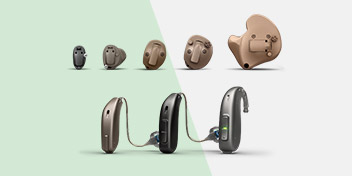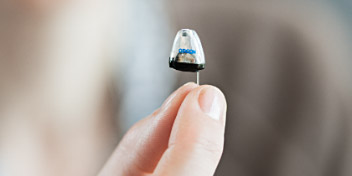Many of our hearing centres are open over Christmas. Check your local centre's opening hours and book your appointment here. Customer service & booking teams will be open on reduced hours.
Behind-the-ear hearing aids

What are behind-the-ear hearing aids?
Behind-the-ear (BTE) hearing aids are designed so that the main body of the aid sits behind your ear. A clear, discreet tube is then connected to an ear mould or dome and placed inside the ear canal.
BTE hearing aids are the most widely used aid on the market today. They are getting smaller as technology advances (which is also true for in-the-ear (ITE) hearing aids), as well as more adaptable, and much more powerful.

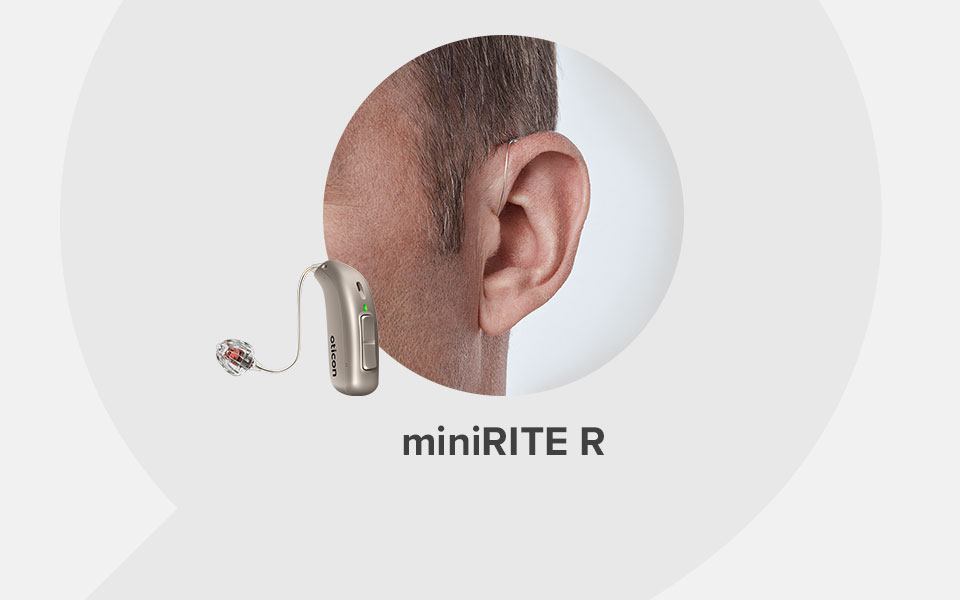

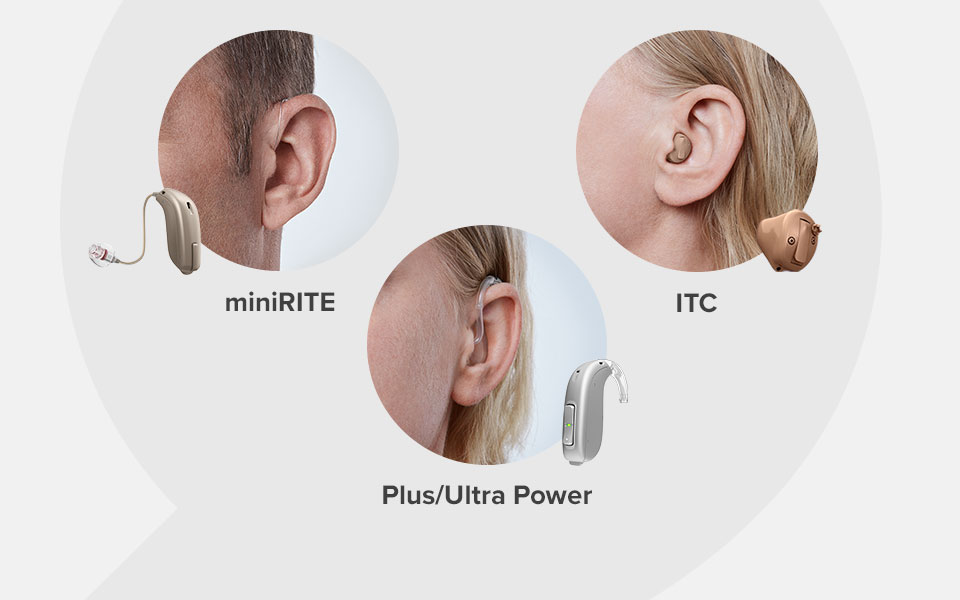




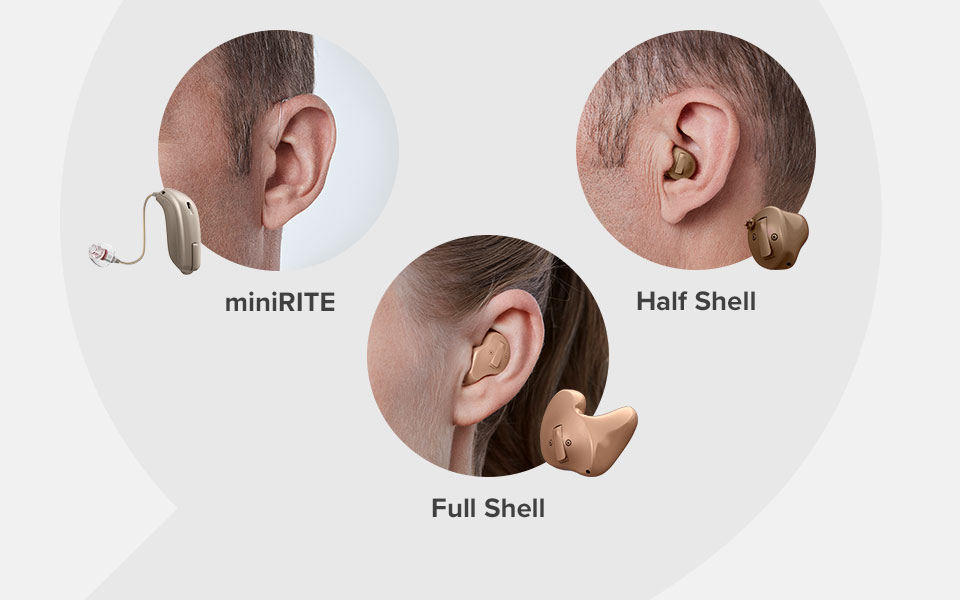
Hearing aid finder: see which type suits you
Take a minute to find out which hearing aid models are right for you.
Your result
Based on your answers, the following hearing aid types might suit your needs:
- miniRITE R
*The result of the test may only be used for guidance and is not meant to replace a more accurate measurement of your hearing abilities and needs by one of our hearing care experts.
Would you like to have a free hearing aid trial?
Your result
Based on your answers, the following hearing aid types might suit your needs:
- miniRITE R
*The result of the test may only be used for guidance and is not meant to replace a more accurate measurement of your hearing abilities and needs by one of our hearing care experts.
Would you like to have a free hearing aid trial?
Your result
Based on your answers, the following hearing aid types might suit your needs:
- miniRITE
- BTE Plus/Ultra Power
- In-the-canal (ITC)
*The result of the test may only be used for guidance and is not meant to replace a more accurate measurement of your hearing abilities and needs by one of our hearing care experts.
Would you like to have a free hearing aid trial?
Your result
Based on your answers, the following hearing aid types might suit your needs:
- miniRITE
- BTE Plus/Ultra Power
*The result of the test may only be used for guidance and is not meant to replace a more accurate measurement of your hearing abilities and needs by one of our hearing care experts.
Would you like to have a free hearing aid trial?
Your result
Based on your answers, the following hearing aid types might suit your needs:
- miniRITE R
*The result of the test may only be used for guidance and is not meant to replace a more accurate measurement of your hearing abilities and needs by one of our hearing care experts.
Would you like to have a free hearing aid trial?
Your result
Based on your answers, the following hearing aid types might suit your needs:
- miniRITE R
*The result of the test may only be used for guidance and is not meant to replace a more accurate measurement of your hearing abilities and needs by one of our hearing care experts.
Would you like to have a free hearing aid trial?
Your result
Based on your answers, the following hearing aid types might suit your needs:
- miniRITE
- Invisible-in-the-canal (IIC)
- Completely-in-the-canal (CIC)
- In-the-canal (ITC))
*The result of the test may only be used for guidance and is not meant to replace a more accurate measurement of your hearing abilities and needs by one of our hearing care experts.
Would you like to have a free hearing aid trial?
Your result
Based on your answers, the following hearing aid types might suit your needs:
- Halfshell/full shell
- miniRITE
*The result of the test may only be used for guidance and is not meant to replace a more accurate measurement of your hearing abilities and needs by one of our hearing care experts.
Would you like to have a free hearing aid trial?
Behind-the-ear hearing aid styles
BTE hearing aids come in different styles. You can learn more about each one in the guides below.
Receiver-in-the-ear (RITE) hearing aids
Receiver-in-the-ear (RITE) – and the smaller miniRITE – hearing aids are placed discreetly behind the ear and are connected by a thin wire to the speaker or receiver, which sits inside the opening of the ear or ear canal. RITE hearing aids are:
- Suitable for most types of hearing loss
- Smaller and less noticeable than traditional BTE hearing aids
- Available with rechargeable battery options
- Able to connect to smart devices via Bluetooth
- Often connected to a small dome for ventilation
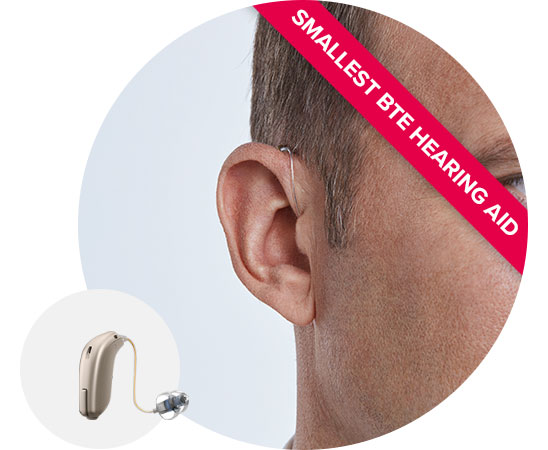
Behind-the-ear (BTE) hearing aids
A clear, thin tube connects the main body of the hearing aid (nestled behind the ear) to an earmould or dome that fits inside the ear canal. The following make BTE hearing aids a versatile option:
- Able to connect to smart devices via Bluetooth
- Suitable for all types of hearing loss
- Suitable for all ear and ear canal sizes
- Able to accommodate high-tech features (due to larger size)
- Telecoil, volume and program controls are easy to manipulate
- Larger battery size provides more power
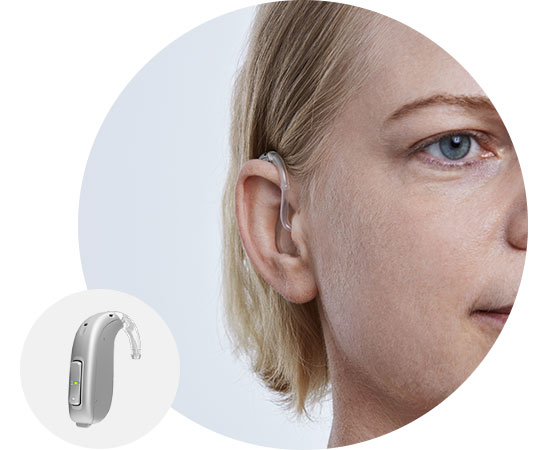

Award-winning behind-the-ear hearing aids
Oticon has won several awards for their groundbreaking hearing aid technology. The latest Oticon Intent™ hearing aid allows you to hear more details, understand more and remember more with less effort.
- Discreet miniRITE style
- Bluetooth and smartphone connectivity
- Rechargeable
Open-fit for behind-the-ear hearing aids
Open-fit (also called Corda miniFit) is a thin tube mounted on BTE hearing aids with a dome or micro-mould as an earpiece.
It’s an ultra-thin, discreet solution, delivering all the benefits of open fittings, which include:
- Keeping the ear canal open so that sound can enter more naturally
- Filtering out background noises
- A more powerful battery than most BTE hearing aids
Pros and cons of behind-the-ear hearing aids
Here’s what you can expect from BTE hearing aids
Pros |
Cons |
| Comfortable Some users find them more comfortable since they don’t sit deep inside the ear canal. |
Might be more visible Since BTE hearing aids are tucked behind the ear, they might be more noticeable than smaller in-the-ear hearing aids. |
| Rechargeable batteries They are available with both disposable and rechargeable battery options. |
More likely to pick up wind noise The behind-the-ear placement means that these devices are more likely to pick up wind noise, but there have been recent technological advancements to help prevent this. |
| Bluetooth connectivity They can connect wirelessly to smart devices via Bluetooth. |
|
| Suitable for severe hearing loss They can cater to more severe hearing loss levels than some other hearing aid types. |
|
| Longer battery life They include larger batteries, meaning a longer battery life. |
|
| Easier to keep clean Since only the ear mould or dome comes in direct contact with the ear canal, they are less vulnerable to moisture and ear wax build-up |
|
| Fewer feedback issues The microphone and receiver are placed farther away from each other than in some ITE hearing aids. This reduces the risk of feedback. |
|
| More open-fitting The thin tube that sits in the ear canal provides ample air ventilation. |


